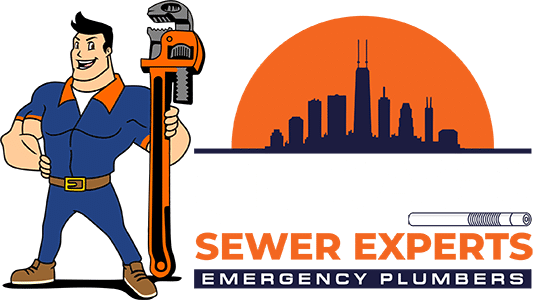As a provider of comprehensive residential and commercial plumbing and drain cleaning services in the Greater Chicago area, we understand the diverse challenges that property owners face in keeping their homes safe, functional, and efficient. One such challenge, particularly in areas prone to groundwater intrusion and flooding, is safeguarding the structure and contents of your home from the damages associated with excess water. The solution? A reliable and properly maintained sump pump.
Sump pumps play a crucial role in protecting your home’s foundation, basement, or lower-level areas from water buildup, particularly during periods of heavy rain or rapidly melting snow. By automatically pumping excess water away from the property, a sump pump helps maintain a dry environment, preventing mold growth, structural damages, and costly repairs.
In this informative guide, we will discuss the basics of sump pumps, explore common types and features, and provide insights into proper sump pump selection, installation, and maintenance. By understanding the importance of sump pumps and following best practices for their care, you can effectively protect your Chicago home from water damage and preserve its value and integrity for years to come.
Stay informed about sump pump fundamentals and learn how to safeguard your home against water damage, mold growth, and structural deterioration in the Greater Chicago area.
Understanding Sump Pump Basics and Functionality
A sump pump is an essential component of a home’s waterproofing strategy, designed to prevent basement flooding and water damage. Installed in a sump pit or basin – typically located at the lowest point of your basement or crawl space – the pump is triggered by a float switch when the water level rises. The sump pump then pumps the water out of the pit and away from the house through a discharge pipe, protecting your home’s structure and contents from damage. This automatic pumping function is vital for mitigating basement flooding during heavy rainfall or snowmelt periods.
Types of Sump Pumps and Selecting the Right Option
Sump pumps are available in various designs, sizes, and capacities. When choosing the appropriate sump pump for your Chicago home, consider factors such as the level of groundwater intrusion, the size of the area requiring protection, and specific functional features. Two common types of sump pumps are:
Pedestal Sump Pumps: Pedestal pumps feature a motor mounted on a shaft above the sump basin, with the pump’s impeller situated at the bottom of the shaft. The motor remains dry and accessible for easier maintenance and repairs, but pedestal pumps tend to be louder and less durable compared to submersible pumps. They are a suitable option for narrow, shallow, or occasionally flooded sump pits.
Submersible Sump Pumps: These pumps have a sealed motor and pump assembly located within the sump basin. Designed to operate underwater, submersible pumps are quieter and more efficient than pedestal pumps, and they have a longer service life. They are ideal for larger, deeper, or frequently flooded sump pits that require more robust pumping capacity.
Consider additional features, such as backup power options, alarm systems, and automatic operation, when selecting the right sump pump for your needs.
Proper Sump Pump Installation and Placement
For optimal performance, it’s crucial to ensure proper sump pump installation and placement. Adhering to local building codes and professional plumbers’ advice can help enhance pump efficiency, reduce the risk of water damage, and extend the pump’s service life. Key aspects of sump pump installation include:
Sump Pit Sizing: Ensure the sump pit is large enough to accommodate the pump’s size and capacity, while also providing sufficient space for proper water flow and pump operation.
Discharge Pipe Installation: The discharge pipe should be installed according to local regulations, with appropriate pipe material, diameter, and length. It should also include a check valve to prevent water from backflowing into the sump pit after pumping.
Backup Power Solutions: To maintain pump function during power outages, consider adding a battery or water-powered backup pump to your system. This added protection is particularly valuable in areas prone to storms and heavy rainfall, where your sump pump is most needed.
Essential Sump Pump Maintenance Tips
Proper sump pump maintenance is crucial for ensuring peak performance and extending the life of your equipment. By following these maintenance tips, you can minimize the risk of pump failure and costly water damage:
Regular Inspections: Inspect your sump pump for debris, corrosion, and damage at least once every three months or after severe weather conditions. Keep the sump pit and pump components clean and free of obstructions.
Test the Pump: Periodically test the sump pump by pouring a bucket of water into the sump pit to ensure it is working correctly and effectively pumping water out.
Check the Float Switch: Inspect the float switch’s functionality by manually moving it to make sure it triggers the pump to turn on and off.
Examine the Discharge Line: Ensure that the discharge line is clear of debris, has no cracks, and discharges water away from the house to prevent waterlogged areas near the foundation.
Conclusion
Sump pumps play an essential role in protecting your Chicago home’s structure and contents from water damage due to flooding and groundwater intrusion. By understanding sump pump basics, selecting the appropriate pump for your needs, and adhering to proper installation and maintenance practices, you can safeguard your property and maintain its value and integrity.
If you need professional assistance with sump pump installation or maintenance, reach out to us today. At Chicago Sewer Experts, our team of expert technicians is dedicated to providing top-notch residential plumbing services, ensuring that your Chicago home remains protected and dry for years to come.

Recent Comments